DIY - How To Install A Whole House Filter
Before Starting - Here's Some Things You'll Need
- Screwdriver
- Teflon Tape
- Razor Knife
- Two adjustable wrenches
- Additional tools may be required if modifi cations to home plumbing are required.
- To maintain full valve flow, be sure the
- plumbing size matches the size of the valve. The outlet pipe should be the same size or larger than the water supply pipe.
- Use copper, brass, or PEX pipe and fittings. Some codes may also allow PVC Plastic pipe.
- ALWAYS install the included bypass valve or install a 3 shut-off valve hard piped bypass. Bypass valves allow the water to be turned off to the filter but can still provide water to the house for water use during repairs or service.
- 5/8" OD, 1/2" ID drain line is needed for the valve drain.
Assembling Your Whole House Filter
1. Remove the tank from the box.
2. Verify the riser tube is secured in the bottom of the tank. The tube should not pull out of the tank.
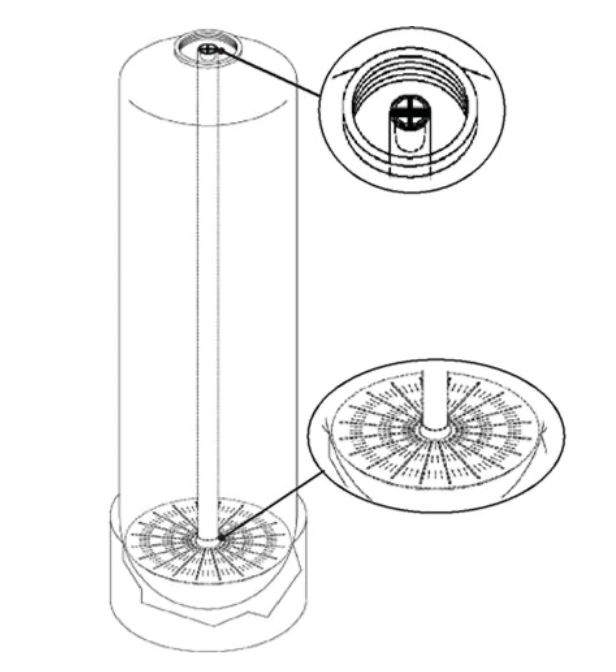

3. Install the clear, plastic cap that is provided in the install kit onto the distributor tube.
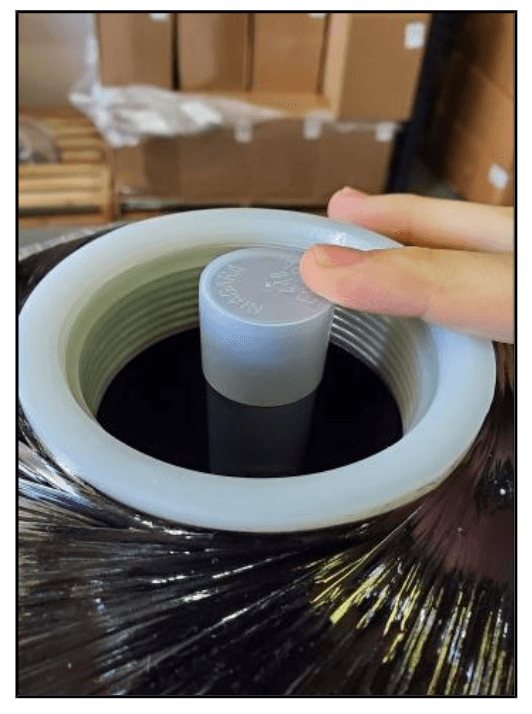

4. Use the blue funnel provided to pour the media into the tank. The order the media is poured in is important. Begin by pouring the media labeled Bag 1 (Quartz Gravel) into the bottom of the tank. Pour it evenly around the hole to ensure it is well distributed in the tank and pour slow enough to keep from plugging the hole. Then proceed to pour the media labeled as Bag 2 (Granular Activated Carbon) and repeat with the media labeled as Bag 3 (Catalytic Carbon). A helper may be needed to hold the funnel during the filling process.
NOTE: It is recommended that a dust mask and safety goggles be worn to prevent possible injury
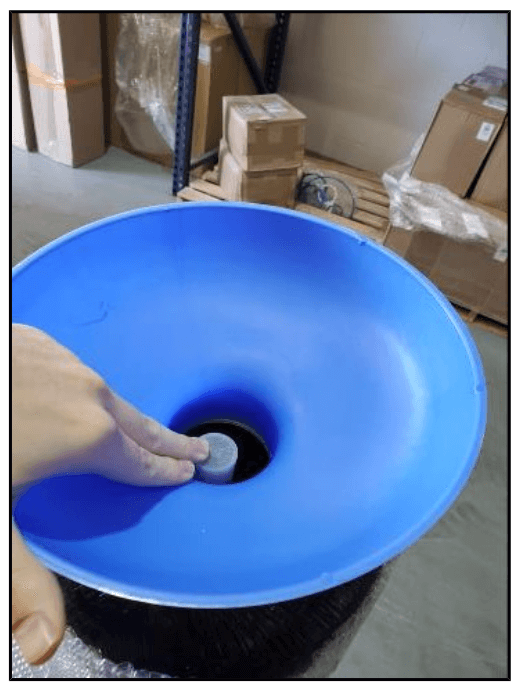

5. When the media is installed, move the tank side to side to settle the media. Remove the funnel and cap from the distributor tube.
6. Lubricate the distributor O-ring and the outer tank O-ring


7. Install the upper basket on the bottom of the valve by lining up the tabs then turning the basket clockwise to lock it in place. Place the upper basket over the distributor tube and push the valve onto the tank. Thread the valve on the tank by turning it clockwise. Be sure not to cross-thread the valve on the tank.


8. Tighten the valve hand tight then snug it further by tapping it with the palm of the hand. DO NOT use tools to tighten the valve or damage could occur.
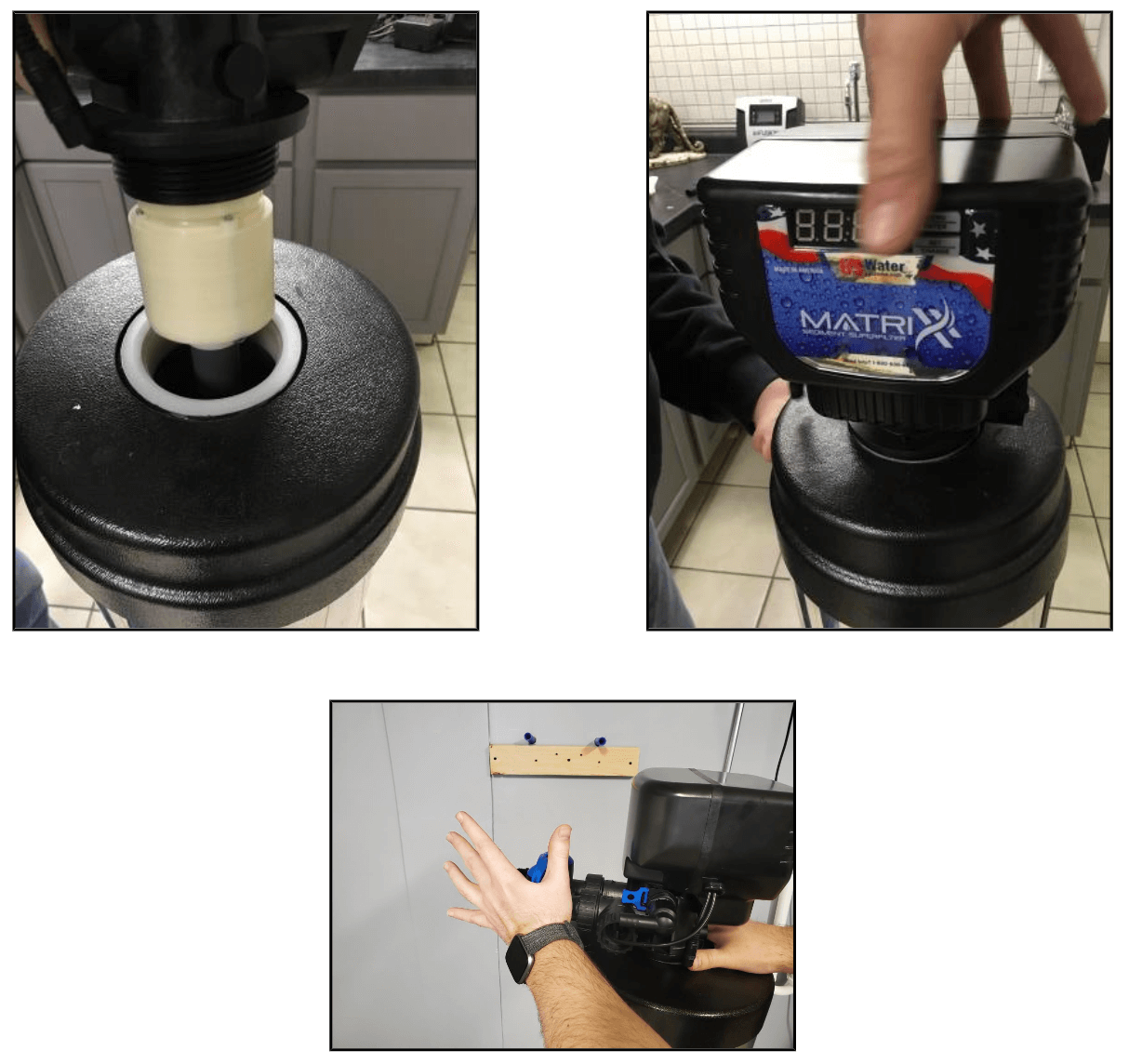

Now That Your Whole House Filter Is Assembled - Let's Start The Installation
1. If your hot water tank is electric, turn off the power to it to avoid damage to the element in the tank.
2. If you have a private well, turn the power off to the pump and then shut off the main water shut-off valve. If you have municipal water, simply shut off the main valve. Go to a faucet or spigot (preferably on the lowest floor of the house) and turn on the cold water until all pressure is relieved and the flow of water stops.
3.Locate the backwashing tank close to a drain where the system will be installed. The surface should be clean and level.
NOTE: Any solder joints being soldered near the valve must be done before connecting any piping to the valve. Always leave at least 6" (152 mm) between the control valve and joints being soldered when soldering pipes that are connected to the
valve. Failure to do this could cause damage to the valve.
The system is equipped with male pipe threaded ports on the control valve bypass.
The bypass is marked with arrows to show proper flow direction. The arrow pointing
toward the valve indicates the inlet. The arrow pointing away from the valve is the
outlet.
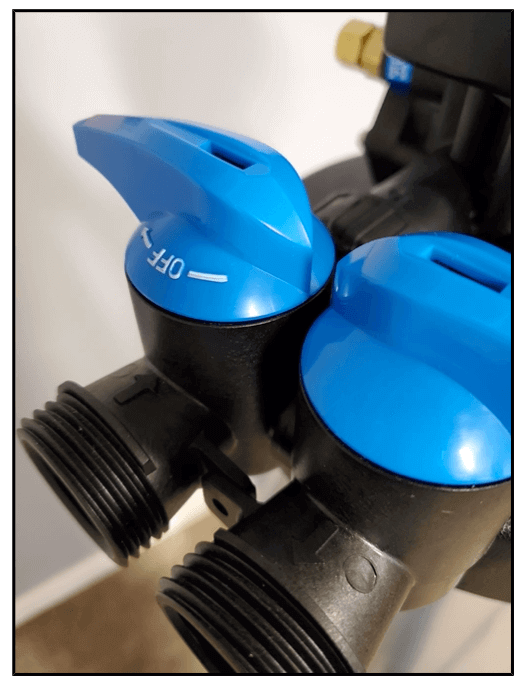

4. Insert the provided plumbing fittings into the bypass. 3/4" and 1" male pipe thread fittings are supplied so ensure you pick the correct one for your plumbing. Tighten the retaining nuts hand tight, ensuring that the fittings are not cross-threaded.
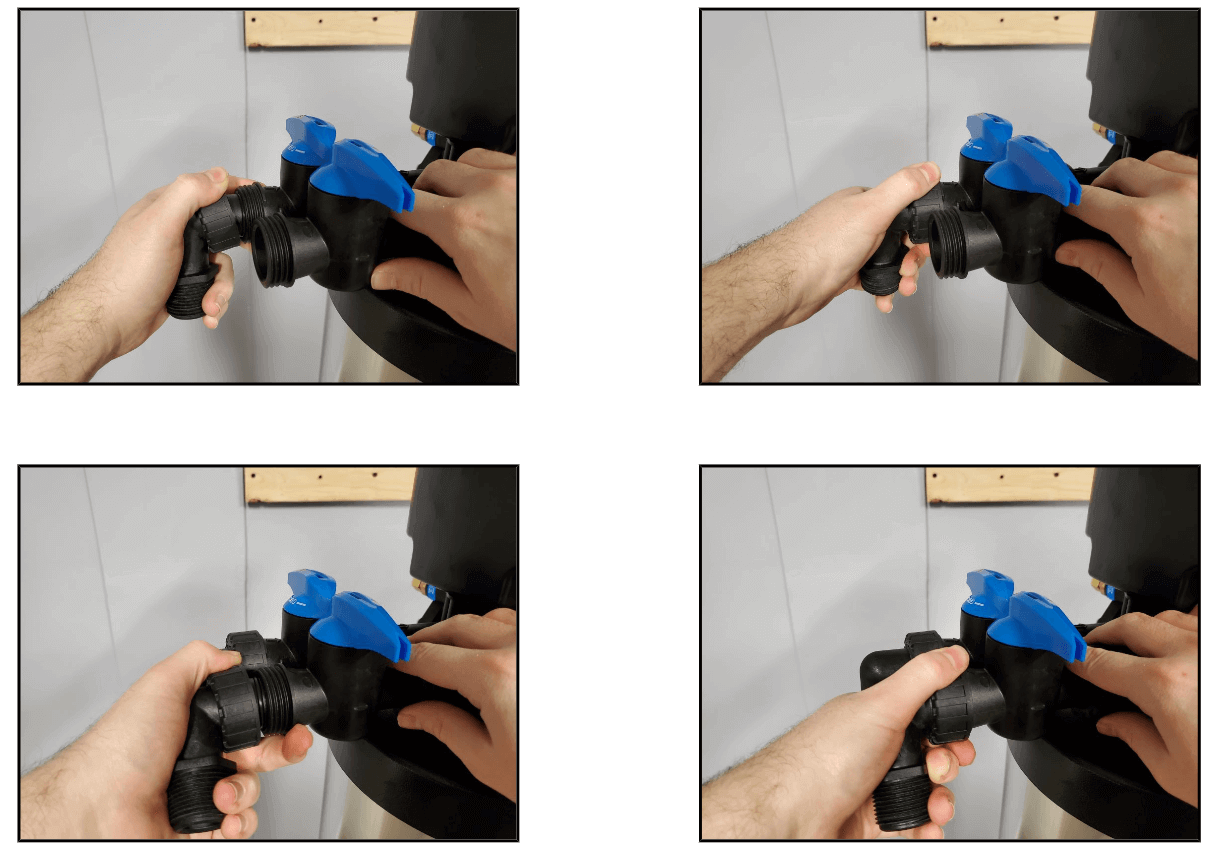

5. Be sure to use Teflon tape or another pipe sealant on the plumbing fitting threads and install them on the bypass accordingly. Use an adjustable wrench to ensure they are tight.
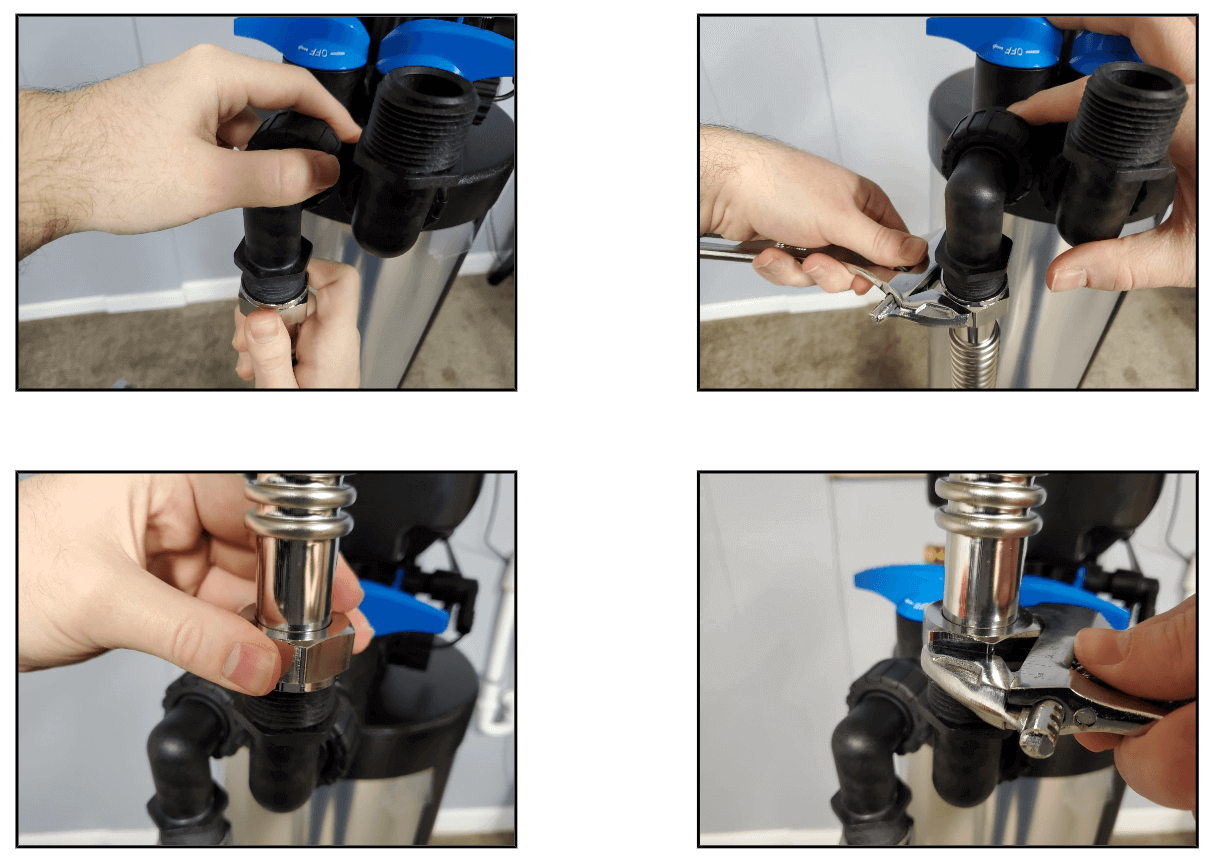

NOTE: All piping should be secured to prevent stress on the bypass valve and connectors.
NOTE: Connections above are made using a stainless steel flex connector with a rubber gasket and do not require Teflon tape.






2 Comments
This looks like it covers the Bodyguard Plus but I have two Bodyguard filters to install in my house; the 2nd is dedicated for fluoride removal.
My kit came with V3007-20 fittings to hook up to the house water lines. They do not have threaded ends as illustrated above. There are no instructions on how to connect this the house water lines, be they pex or whatever. Cant find anything via google either. Am a proficient DIYer including plumbing but need a little help here please. Need to connect to 3/4" copper but assume need intermediate 1" pex hose; yes?
We have multiple connectors available. Please call out the Tech Support Department between 8 AM and 6 PM EDT Monday Friday and 9 AM to 3 PM EDT on Saturday, and they will fix you up.
Leave a comment
Please note, comments need to be approved before they are published.